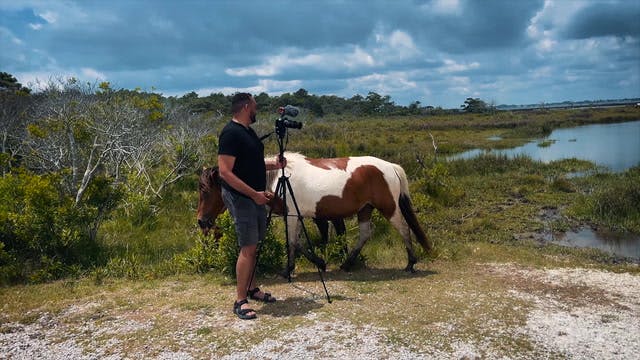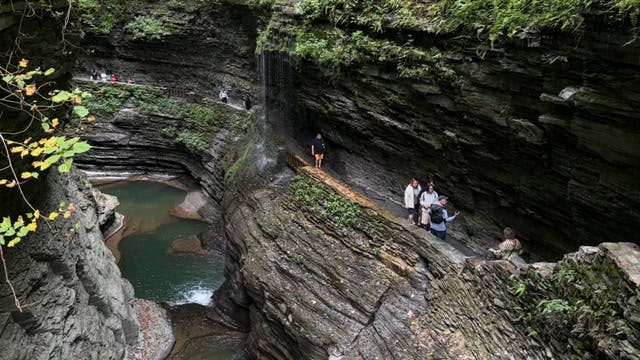A Giant Beach in West Michigan
Charles Mears State Park is mostly a giant beach and an attached campground. But it's super popular because of its awesome Lake Michigan waterfront.

Charles Mears State Park is mostly a giant beach and an attached campground. But it's super popular because of its awesome Lake Michigan waterfront.
The pulse of what's trending on The Parks Channel. Check out the most watched videos.


37°56'4.26"N, 75°22'32.44"W
Assateague Island
Maryland
Virginia
Discover one of the few places in America where horses roam free. Assateague Island is a barrier island between Maryland and Virginia.


42°22'50.07"N, 76°52'24.41"W
Watkins Glen State Park
New York
Experience one of the most visited parks in the Finger Lake region of New York State.


42°54'37.14"N, 76°47'47.43"W
Women's Rights NHP
New York
From the Statues, to the Church, and Museum, take a tour and learn about the history of Women's Rights in Seneca Falls.

The Richmond National Battlefield Park commemorates 13 American Civil War sites around Richmond, Virginia, which served as the capital of the Confederate States of America for most of the war. The park connects certain features within the city with defensive fortifications and battle sites around it. The city of Richmond was heavily fortified during the Civil War, and the park includes both Confederate and Union earthworks as well as several preserved buildings from the time period. The battlefield sites around Richmond saw some of the heaviest fighting of the war, including the Battles of Seven Pines, Malvern Hill, and Gaines' Mill.
Go to park page
Called "the new crown jewel of Civil War sites in America" by renowned historian and writer James M. McPherson, Pamplin Historical Park is a 424-acre expanse that commemorates the battle for Petersburg, Virginia, featuring museums, antebellum homes, an exhibit on the live of the enslaved and lots of special events. The land was donated by Dr. Robert B. Pamplin Jr., whose family owned the land. For a deeper experience, check out its Civil War Adventure Camp, where you can re-enact the life of a newly enlisted private.
Go to park page
The Crow tribe originally owned a vast territory of 38 million acres in Montana, Wyoming, and South Dakota. In 1851, they signed the Treaty of Fort Laramie, which recognized their right to this land. However, in 1868, they were forced to sell 30 million acres to the U.S. government. The remaining 8 million acres became the Crow Indian Reservation. The Crow tribe's land was further reduced in subsequent years due to dams, military expansion, and mining. Today, the Crow Indian Reservation has a land area of 2.2 million acres and is home to approximately 11,000 people, of whom 7,900 reside on the reservation. Twenty percent of the tribe speaks Crow as their first language. The reservation is bordered by Wyoming to the south and the Northern Cheyenne Indian Reservation to the east. It includes the northern end of the Bighorn Mountains, Wolf Mountains, and Pryor Mountains.
Go to park page
The Mississippi National River and Recreation Area is a sprawling 72-mile park that offers something for everyone. Whether you're looking to relax in nature or get active, there's something for you here. Fish and boat in the calm waters, explore the trails on foot or by bike, or paddle a kayak through the rapids. The visitor center is also a great place to learn about the history of the Mississippi River and see some amazing artifacts. If you're looking for an adventure, Upper St. Anthony Falls Lock and Dam is a must-see. Self-serve kayaks are available for exploring, and the views from the top of the dam are incredible. No matter what your interests are, you're sure to find something to enjoy at Mississippi River National Recreation Area.
Go to park page
Adirondack Park spans over six million acres, making it the largest state park in the U.S. Unlike most state parks, about 52 percent of the land is privately owned inholdings. This breathtaking expanse boasts more than 10,000 lakes, 30,000 miles of rivers and streams, an estimated 200,000 acres of old-growth forests, and rugged mountains, including the iconic Adirondack High Peaks. The area is the historic home of the the Haudenosaunee Confederacy, also known as the Iroquois Confederacy, which consisted of several Native American nations, including the Mohawk, Oneida, Onondaga, Cayuga, Seneca, and Tuscarora. A haven for outdoor enthusiasts, the park offers endless opportunities for hiking, camping, boating, and wildlife observation. Part of New York’s Forest Preserve, which was designated a National Historic Landmark in 1963, the park also has a rich cultural heritage, with charming Adirondack-style architecture and small towns dotting the landscape.
Go to park page
The Frank Church-River of No Return Wilderness Area in central Idaho is a true backcountry gem, covering over 2.3 million acres of untamed land. It’s the largest wilderness area in the lower 48 states, and what makes it so special is its remoteness—there are no roads here. The Salmon River, known as the "River of No Return," slices through the rugged terrain, offering world-class whitewater rafting. The wilderness is a haven for hikers and horseback riders, with trails leading to stunning alpine lakes and craggy peaks like the Bighorn Crags. Wildlife is everywhere—keep an eye out for moose, wolves, and even bald eagles soaring above. If you’re looking for solitude and adventure, this is the ultimate escape.
Go to park page
We curate videos that entertain and inform. Join our growing community of creators – or simply explore.
Explore videos

Create your own profile, playlists and checklists.